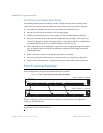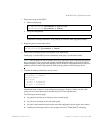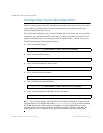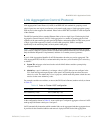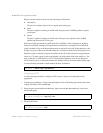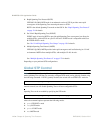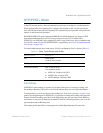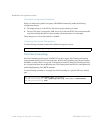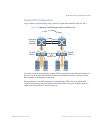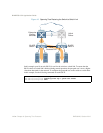
BLADEOS 6.5.2 Application Guide
110 Chapter 8: Spanning Tree Protocols BMD00220, October 2010
Rapid Spanning Tree Protocol (RSTP)
IEEE 802.1D (2004) RSTP mode is an enhanced version of STP. It provides more rapid
convergence of the Spanning Tree network path states on STG 1.
RSTP is the default Spanning Tree mode on the G8124. See “Rapid Spanning Tree Protocol”
on page 124 for details.
Per-VLAN Rapid Spanning Tree (PVRST)
PVRST mode is based on RSTP to provide rapid Spanning Tree convergence, but allows for
multiple STGs, with an STGs on a per-VLAN basis. PVRST mode is compatible with Cisco
R-PVST/R-PVST+ mode.
See “Per-VLAN Rapid Spanning Tree Groups” on page 126 for details.
Multiple Spanning Tree Protocol (MSTP)
IEEE 802.1Q (2003) MSTP provides both rapid convergence and load balancing in a VLAN
environment. MSTP allows multiple STGs, with multiple VLANs in each.
See “Multiple Spanning Tree Protocol” on page 127 for details.
Depending on your preferred STG configurations:
Global STP Control
Note – By default, the Spanning Tree feature is globally enabled on the switch, and is set for RSTP
mode. Spanning Tree (and thus any currently configured STP mode) can be globally disabled using
the following command: If STP is globally disabled, the switch will use STP/PVST+ mode for
internal controls, but will disable Spanning Tree on all user-configurable STGs.
Spanning Tree can be re-enabled by specifying the STP mode:
where the command options represent the following modes:
pvst:STP/PVST+ mode
rstp:RSTP mode
pvrst:PVRST mode
mst:MSTP mode
RS G8124(config)# spanning-tree mode disable
RS G8124(config)# spanning-tree mode {pvst|rstp|pvrst|mst}





